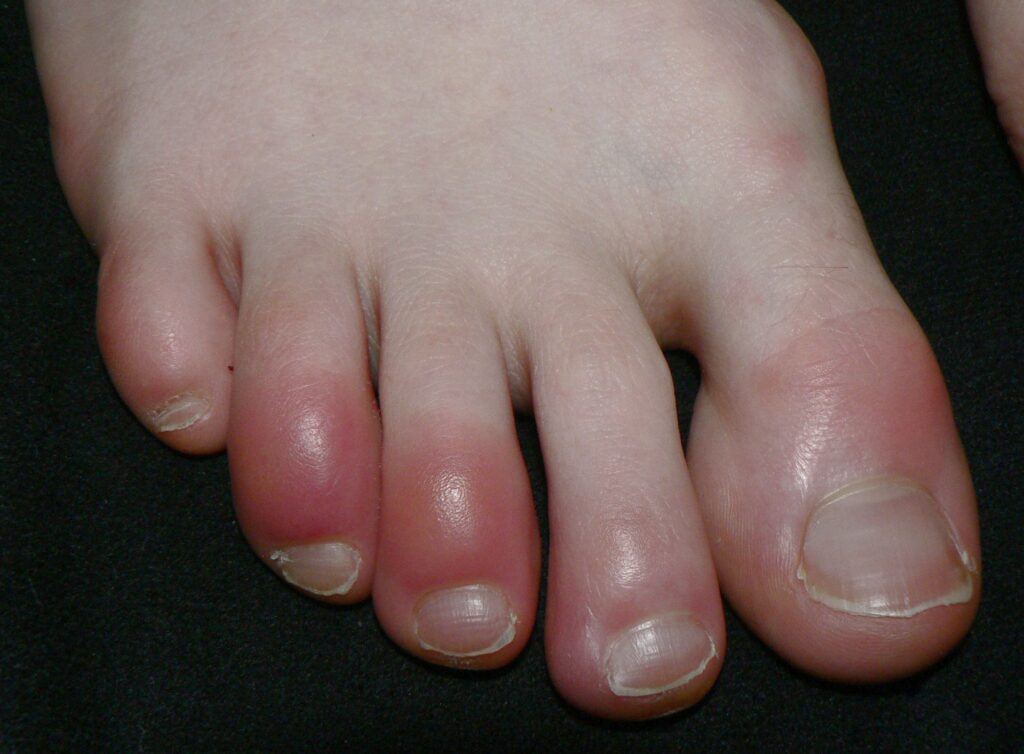Chilblains are a common problem of the microcirculation in colder climates.

Chilblains start as an inflammatory response caused by changes in those that are vulnerable. They are seasonal and occur in the colder temperatures. They can be a particular problem in extreme sports. that take place in the cold environments. While they start out as red itchy and painful spots, if they keep recurring they become chronic and take on a dark blue coloration.
The best way to deal with chilblains is to prevent them in the first place. The feet must be kept warm with the use of appropriate socks and shoes. If the foot does become cold, it is important that it is only warmed up slowly and the circulation give time to respond to the warming temperature. It is thought that a keep issue on chilblains is the too rapid warming of the skin after it is cold.
If a chilblain does develop, then the best approach is to keep it warm, stimulate the circulation with gentle massage with creams and to protect the skin from breaking down. If the skin is broken, then wound dressings need to be used to allow it to heal up.
